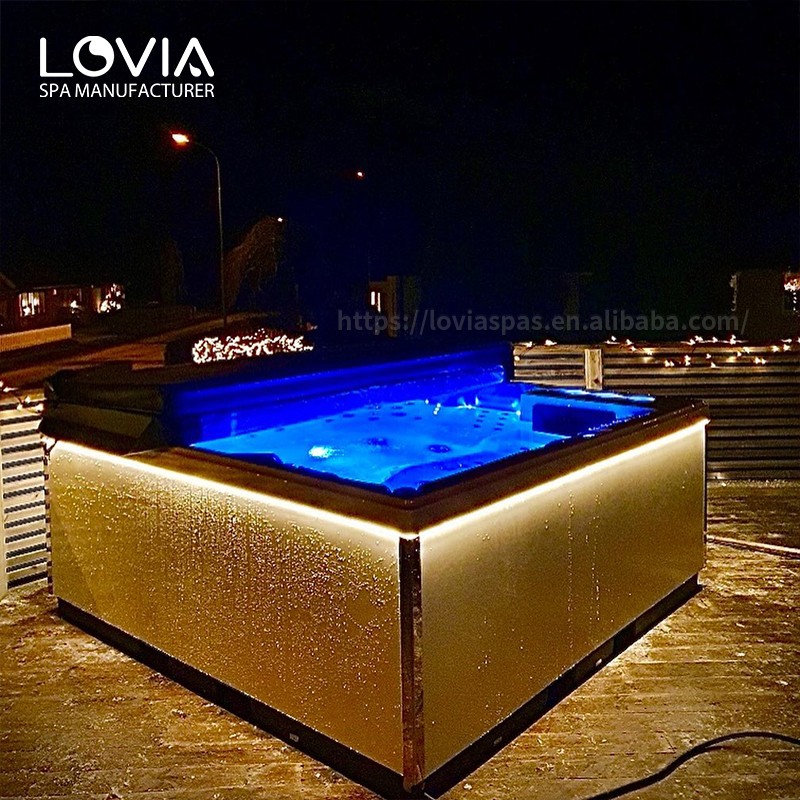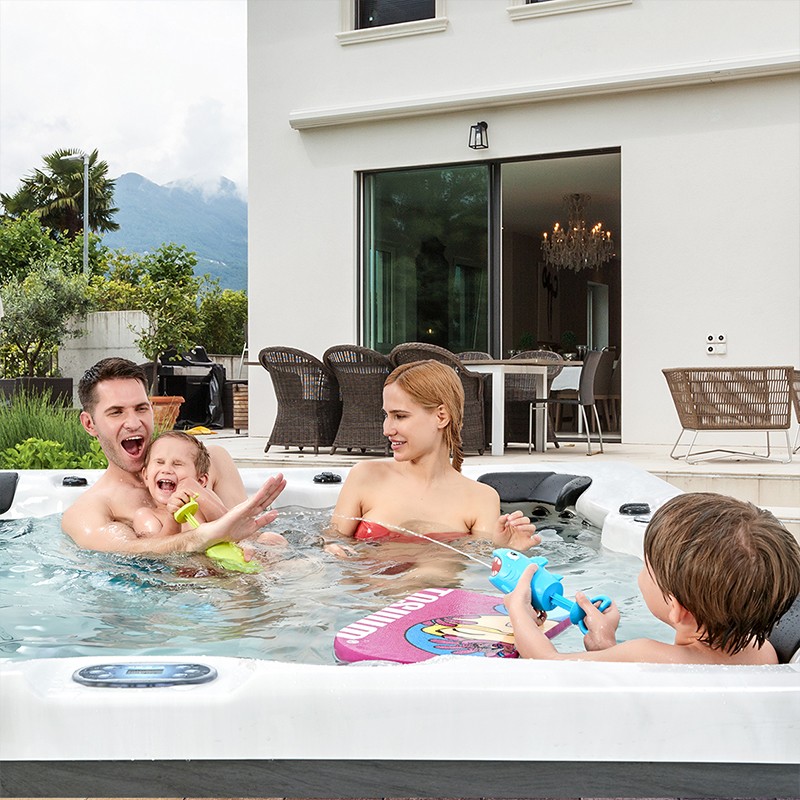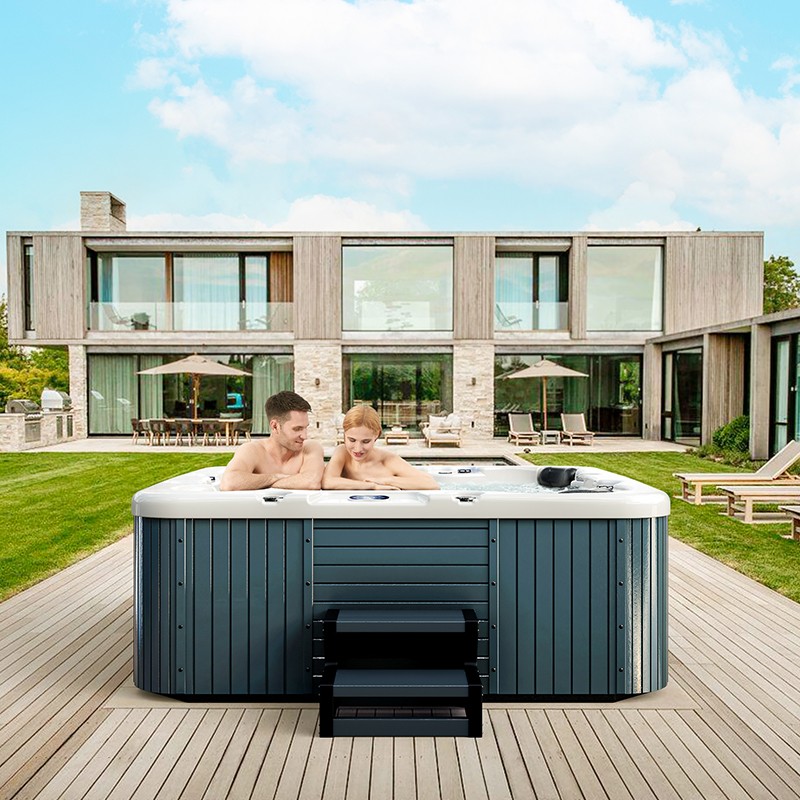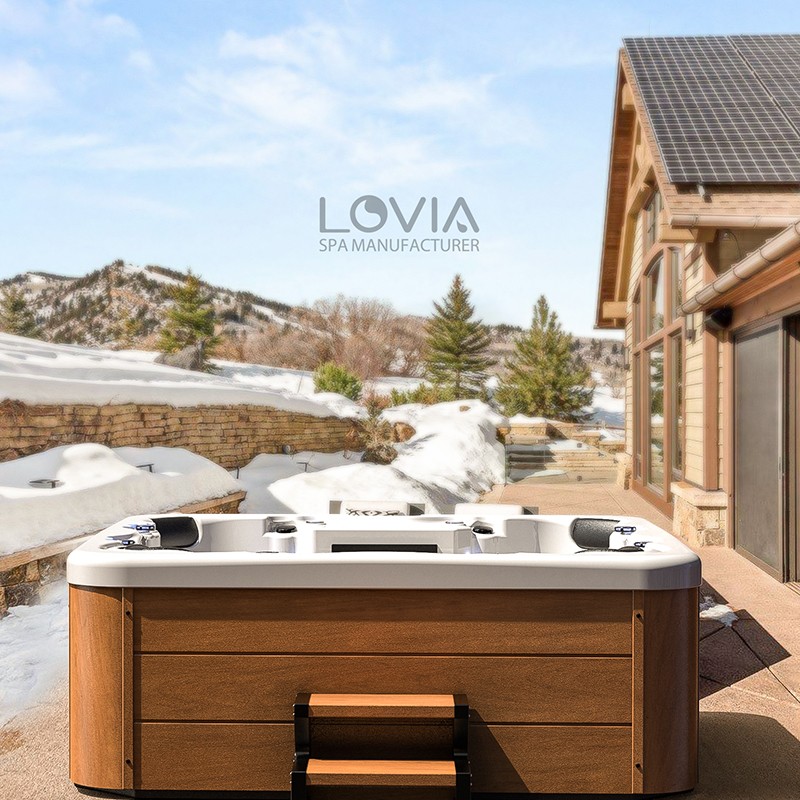
Can I fill the outdoor spa hot tub with hot water to replace the heater?
2025-07-18 15:30As a modern family leisure facility that integrates entertainment, spa, and health relaxation, the outdoor spa hot tub is becoming more and more popular. It relies on electric heaters or natural gas heating systems to maintain a constant water temperature, thereby achieving spa functions and comfortable experience.
Some users may have a seemingly reasonable but worthy of in-depth discussion question for energy saving, equipment failure or economic considerations: Can I directly inject hot water into the outdoor spa hot tub to replace the heating effect of the heater?
This question seems simple, but it actually involves multiple professional fields such as physical thermodynamics, equipment structure, material safety, water quality control, electrical system, and energy consumption economy. This article will systematically explore the feasibility, potential risks, technical limitations and correct practices of this issue, and strive to provide clear, scientific and operational answers for the majority of outdoor spa hot tub users.

Outdoor spa hot tub——core components and heating principle
1. Core components of outdoor spa hot tub
A standard outdoor spa hot tub usually includes the following key components:
·Water pump and jet system: provide circulating water flow and hydromassage;
·Electric heater or gas heater: responsible for heating the water in the bathtub to the set temperature (usually 37°C to 40°C);
·Filtration system: continuously remove impurities in the water and maintain water quality;
·Control panel and temperature sensor: users can set the target temperature, and the system monitors in real time;
·Insulation layer and insulation cover: reduce heat loss and improve energy efficiency.
2. The irreplaceable role of the heater
The design of the outdoor spa hot tub heater is not only to "heat" the water body, it also undertakes the following important functions:
·Continuous temperature control: maintain a stable water temperature according to sensor feedback;
·Heat circulation system matching: hot water is transported to the whole tub through the water pump and nozzle to ensure uniform temperature;
·Safety automatic power-off protection: prevent the water temperature from being too high or too low to damage the equipment and user health;
·Linked with the disinfection system: constant temperature is conducive to the effective work of chlorine, bromine or ozone.
Therefore, just injecting hot water once cannot replace the continuous heating, regulation and circulation functions of this system in the long term.

Is it feasible to inject hot water directly into the outdoor spa hot tub?
1. Can the hot water injection reach the target temperature?
In theory, users can inject hot water into the outdoor spa hot tub through a household water heater, boiler or other means to quickly heat up the water. However, this method has many limitations:
· Uneven temperature distribution: After the hot water is injected, it is easy to concentrate on the surface, and the temperature of the bottom layer is still low;
· Limited large-scale injection of water: The capacity of the household hot water supply system is limited, usually only 20 to 50 liters of hot water can be supplied at a time, while the volume of the bathtub is generally more than 1,000 liters;
· Time-consuming and labor-intensive to add water: It takes several consecutive injections to initially reach the ideal water temperature;
· Rapid drop in water temperature: Without the support of the constant temperature system, the water temperature drops rapidly in a short time.
Therefore, from the perspective of sustainability and efficiency, hot water injection can only be used as "temporary auxiliary heating" and cannot truly replace the complete function of the heater.
2. Risks to bathtub structure and materials
Most outdoor spa hot tubs use acrylic liner + fiberglass insulation shell structure. If hot water above 60°C is directly injected, the following damage may occur:
· Uneven thermal expansion of materials: causing deformation and cracking of the liner;
· Accelerated aging of pipes: High temperature easily causes aging of PVC or rubber water pipes;
· Damage to nozzle and pump seals: Instantaneous high water temperature affects the sealing performance of rubber rings;
· False alarm or burnout of electronic components: Some sensors mistakenly think that the system is abnormally heated and forced to shut down.
Therefore, direct high-temperature water injection without buffering and water flow distribution has a certain risk of equipment damage.

From the energy consumption analysis of spa hot tub: Does injecting hot water really save money?
1. The cost of domestic hot water supply is higher than electric heating
Users often think that "using hot water instead of outdoor spa hot tub heaters can save electricity bills", but in fact, the unit heating cost of domestic water heaters (such as gas water heaters or electric water heaters) is usually higher than that of professional spa heaters for the following reasons:
·Low efficiency: The average thermal efficiency of electric water heaters is 80%-90%, while that of spa-specific heaters is more than 98%;
·Low hot water utilization rate: A large amount of heat is lost during the water filling process;
·Must add water in batches: time-consuming and labor-intensive, and cumbersome to operate;
·Limited hot water outlet temperature: Most water heaters have a maximum temperature of 50°C~60°C, which cannot provide enough "high-temperature water" to heat the entire bathtub.
After multiple injections and cooling, users often need to use outdoor spa hot tub heaters for further heating, which is not cost-effective.
2. Adding hot water increases the burden of water bills
Hot water is equivalent to heating cold water, so the use of a large amount of hot water is inevitably accompanied by a large amount of cold water consumption, especially in areas where water resources are expensive, which will significantly increase household water expenses.
Conclusion: In the long run, using the original heating system of the outdoor spa hot tub is the most economical constant temperature solution.
Outdoor spa hot tub: Complexity of water quality management
1. Hot water injection can easily destroy the water chemical balance
Outdoor spa hot tubs are usually used in conjunction with disinfectants (such as chlorine, bromine), pH regulators, water hardness regulators, etc. The dissolution rate and reaction efficiency of each chemical are closely related to the water temperature.
After hot water injection, it may cause:
· pH value fluctuates sharply;
· Disinfectant concentration is unbalanced;
· Accelerated scale deposition;
· Increased filter load, shortening the replacement cycle;
· Water becomes turbid and breeds bacteria.
Unless the water quality is re-tested and adjusted, it will directly affect the hot tub hydrotherapy effect and user health.
2. Decreased ability to control bacteria
When the water temperature is unstable, bacteria such as Legionella are more likely to grow, especially when the water temperature is in the "bacterial breeding temperature zone" between 30°C and 37°C for a long time. The original heater can perform high-temperature sterilization functions regularly (such as setting 45°C to run for one hour), but the manual heating method cannot achieve this function.
Therefore, from a public health perspective, the direct use of hot water without water quality control is unprofessional and poses health risks.

When can hot water be used as a supplementary solution in moderation?
Although it is generally not recommended to use hot water to replace outdoor spa hot tub heaters, in the following special cases, it is possible to consider using hot water to assist operation in moderation:
1. When filling or changing water for the first time
When the spa hot tub needs to be refilled after cleaning, some hot water can be added in moderation to shorten the heating time. However, it should meet the following requirements:
· The water temperature must not exceed 45°C;
· It must be fully mixed with cold water before being injected into the bathtub;
· It must not be injected directly into the filter port or nozzle port;
· It still needs to rely on the heating system to complete constant temperature control.
2. During temporary heater failure
If the outdoor spa hot tub heater has a short-term problem and the user needs to maintain the use temperature, a small amount of hot water can be added to "maintain the temperature", but it is only for a short-term remedy and cannot be used as a long-term alternative.
3. Winter anti-freeze measures
In cold areas, users can use warm water to assist in initial heating at the beginning of the heater to prevent the equipment from freezing and cracking. However, the water temperature should be strictly controlled during this process, and the original system should be started immediately for continuous heating.
Therefore, hot water cannot replace the outdoor spa hot tub heater
For the question "Can I use hot water to replace the outdoor spa hot tub heater?", the answer should be clear:
——No, and it is not recommended to do so for a long time!
Although hot water injection can be used for short-term auxiliary in some cases, this practice cannot replace the multiple functions of the outdoor spa hot tub heating system, such as constant temperature, circulation, safety, and water quality control. There are also certain problems such as material damage, water quality imbalance, electrical risks, and economic waste.
The correct approach should include:
· Always use the original heating system;
· Regularly maintain the heater and filter;
· Do not modify the circuit or directly cut off the power at will;
· When changing water, a small amount of heating assistance can be used, but the temperature and injection method should be strictly controlled;
· If there is a problem, contact the manufacturer or professional technician for repair in time to avoid secondary problems caused by artificial substitution operations.
How do you handle quality control during production?
Quality control at Guangzhou HuanTong Industrial is systematic and rigorous. Our 20+ quality experts conduct multiple inspections at every stage—from raw material selection to final assembly and packaging. We adhere strictly to international standards certified by CE, ETL, and ISO9001. This guarantees that every spa jacuzzi tub and swim spa leaving our factory meets the highest standards for safety, performance, and durability.
